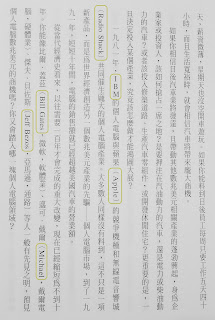Project statement
The topic of my essay is about how brands in Hong Kong create their logos with traditional Chinese characters by its specific structures the can be edited to form a new design. Therefore, I was thinking if I could make something based on the research that I have collected and use it to my practical outcome, it would be meaningful.As my essay is about how brands edit traditional Chinese characters and use it into their logo, hence, my practical work is a typographic guide to be used by designers when branding for a Hong Kong market. I think it is a great opportunity for me to get more knowledge about how to use traditional Chinese characters to create a brand in Hong Kong as I am originally from Hong Kong. After did those research, I was quite surprise, even though Cantonese is my first language but I didn’t know there are many complicated structures until I did the research. Hence, in the practical project, it is a really good platform to practice on it so that I can get more experience for my future when I work in Hong Kong. I found that symmetry, editing stroke weight and cursive writing style are the best categories for designers to create their brands in Hong Kong using traditional Chinese characters. Due to the fact that they give a strong, powerful and creative image to consumers, hence, I can apply these categories when I work with traditional Chinese characters in Hong Kong. Symmetry makes characters become more legible because it makes the character more like pictogram. Adjusting stroke weights can create a strong contrast to viewers. The cursive writing style provide the tradition beauty to the characters. Normally, I didn’t really have a chance to design with traditional Chinese characters as I usually just designed with English so this was a great chance for me to practice on designing with traditional Chinese characters. I found that we need to manipulated the characters according to how they look like, for example, if the character has too many strokes, it would be better to manipulate with geometric shapes so that the character won’t look too complex.
I think I did a good time planning to write the essay as it is quite difficult for me to write 5000 words due to the fact of the language barrier so I started it quite early in order to finish it on time. In the practical project, I tried with different categories on some traditional Chinese characters and I found that symmetry, editing stroke weight and cursive writing style are the best for designers creating their brands in Hong Kong because they look really effective. Overall the project, I think I can try to choose some famous UK brands and rebrand their logo into Hong Kong market with traditional Chinese characters next time so that I can have more chance to try working with traditional Chinese characters in Hong Kong market. Moreover, grammar and tenses are the most difficult part on my essay because in traditional Chinese we don’t really have grammar and tenses so it is completely different, what I can do is to practice more on writing in order to prevent the same mistake occur again and it would be a great chance to improve my English as well.


















































